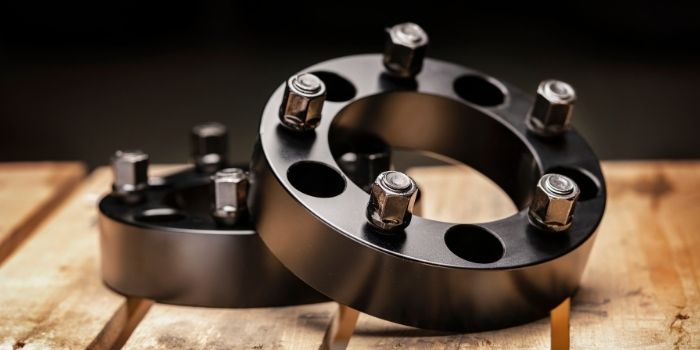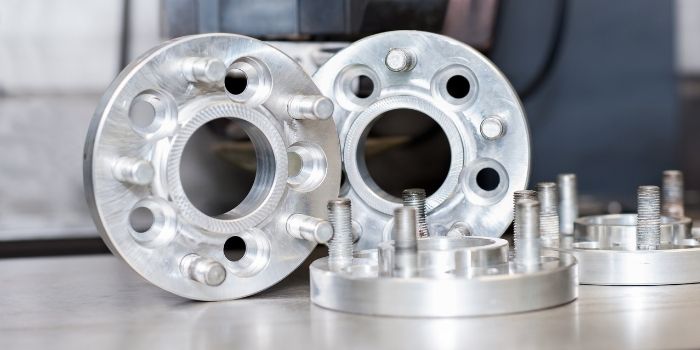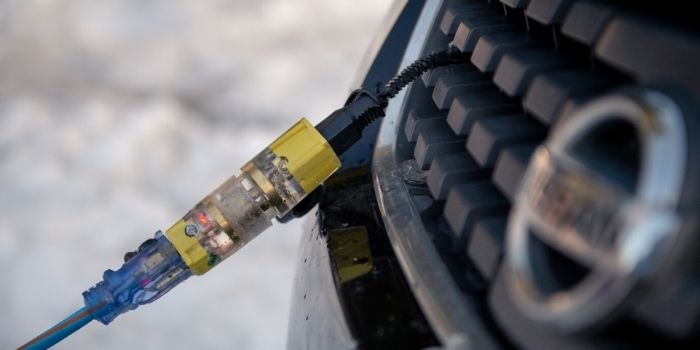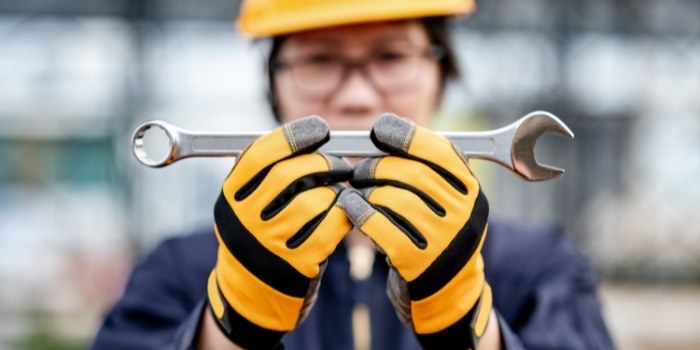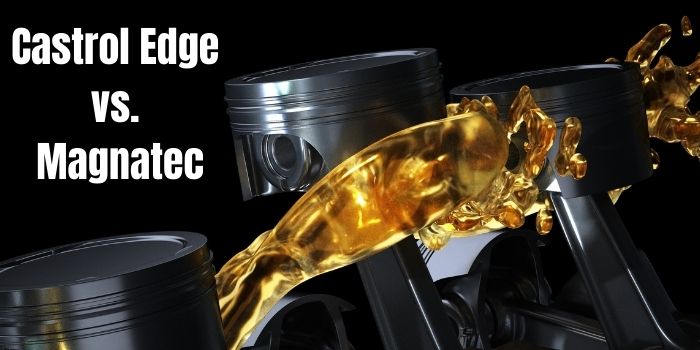Wheel spacers are becoming more popular day by day for a variety of reasons.
When done correctly, they give off a unique aesthetic that elevates the appearance of your vehicle to a whole new level.
Of course, it’s not just about looks, they also provide a host of advantages on both the street and the track.
But, are wheel spacers safe, and should you use them on your vehicle?
In this detailed article, we’ll go over all you need to know about the much-debated safety of wheel spacers.
Table of Contents
What are Wheel Spacers?
Wheel spacers are circular discs that go between the wheels and rotors.
It increases the offset of the wheel, which results in an increase in the width of the tire’s distance.
Even if the size of the tire remains constant, this improves handling.
The thickness of a wheel spacer may range from 3mm to 23mm. The variety of sizes available allows you to push your wheels out as far as you want to.
Wheel spacers are classified into two types: lug-centric and hub-centric.
They differ from each other in this way.
- Hub-centric wheel spacers are centered by the wheel hub. The holes in the spacer properly match the hub’s wheel-centering flange.
- Lug-centric wheel spacers are centered by the lug nuts. The spacer’s borehole does not perfectly match the wheel centering flange. Rather, it’s frequently several millimeters bigger in diameter.
In general, hub-centric wheel spacers are the better choice. They cannot be placed off-center.
But it may be possible to place lug-centric spacers off-center, resulting in vibration akin to an imbalanced wheel.
So why are lug-centric spacers still created?
Because certain hubs have distinct diameters and were built in limited amounts.
Making spacers for low manufacturing automobiles with distinct hubs is not financially feasible.
On the other hand, developing one lug-centric spacer is more lucrative which works for numerous different automobiles.
What Do They Actually Do?
Wheel spacers’ primary function is to provide greater space between the wheel and hub assembly. So, what’s the point of having this extra space?
It’s not a good idea to have the wheel too near to other interior components, such as the wheel well.
If they were too close, the vehicle’s performance would suffer. The tire would scrape against the wheel liner or suspension components while turning.
Wheel spacers just offer a little more space to ensure that you don’t have any clearance difficulties. They are often utilized in automobiles with bigger or wider tires.
This is often the result of a custom installation in which the tires you install are bigger than the normal tires that came with the car.
As a result, you may need wheel spacers to make them fit in the area.
They may also provide your car with a sleeker look by pushing your wheels farther away from the chassis.
They may be flush with the fender or may protrude slightly. If that’s the appearance you’re looking for, wheel spacers are a must.
Another major benefit of wheel spacers is that they improve traction on the road.
If you want your car to handle better, position the wheel further away from the assembly of the hub.
This improves the traction between the tires and the pavement on the road.
Pros and Cons of Using Wheel Spacers
While wheel spacers can help improve the look of your car and potentially improve its performance, they also come with a certain amount of risk.
If not installed properly, wheel spacers can cause your car to vibrate excessively or even come loose, which could lead to an accident.
With that said, wheel spacers can be safe for daily driving and even for off-roading, if they are used correctly.
The Pros
Following are some of the pros of wheel spacers:
1. Handling is improved
This is one of the key benefits of spacers for car owners.
The automobile is better grounded when the separation between the right and left wheel increases which results in better cornering, handling, and grip.
2. Enables room for bigger and wider tires
It enables owners of on-road cars to install larger tires for increased handling and grip.
Off-road car owners often choose bigger tires that are higher than regular tires.
Which are often scraped against the fender flares or wheel wells if not fitted with spacers.
One more cause to acquire spacers is to add bigger wheels.
Besides bigger tires, it also allows for the installation of a bigger caliper that would not fit in the stock wheel area.
3. Provides the automobile a distinct stance/look
Regardless of your likes and dislikes, there’s no doubt that wheel spacers affect the appearance of a car.
If the spacers are mild, they can give a showy look to the car which is adored by many.
The aggressive spacer will offer greater aftermarket flair, giving an appearance that will be distinct from factory autos.
4. Simple Installation and Inexpensive
Wheel spacers are simple to install. The difficulty is comparable to changing a tire.
With minimal equipment, you can accomplish it in your garage or driveway.
Each wheel takes around 15 minutes to complete, making this an easy activity for any day of the week.
Above all, they are inexpensive to install.
An excellent set of four-wheel spacers may be purchased for roughly $135.
Considering the substantial effect on performance and aesthetics, this is a terrific bang for the money.
There aren’t many other aftermarket modifications that make as big of a difference for the price.
The Cons
Wheel spacers have cons too as everything.
1. Steering Effort Increased
Better handling also comes with a big pain in the head which is increased in efforts for steering.
With the wheels wider apart, the input to turn the tires increases.
The consequences are most noticeable at low speed.
This disadvantage, however, is simple to overcome with contemporary power steering.
2. Reduced Ride Quality
Your car’s engineers did an excellent job to enhance the ride quality of your car.
Installing spacers, on the other hand, puts everything off balance.
The greater the distance between the wheels and the suspension components, the lower the ride quality.
Bigger the spacers, the greater the influence on comfort.
3. Suspension components wear faster
Because the wheels are further away from the car, the suspension is placed under additional pressure.
Components such as your wheel bearings may wear out faster with a broader geometry.
Plus, in many cases, the wheel spacers when installed can affect your vehicle’s warranty, so do check them for sure.
So, Are Wheel Spacers Bad or Good for Your Car?
Following an examination of tire spacers and their function on your car, the question still remains the same, if they’re bad to good.
There are two answers to this query.
If you’re familiar with wheel spacers, how to properly put them in place or get it done by someone else, what’s the use of them, may be quite useful.
If you don’t know how to put them in place, or you put them incorrectly by yourself or other rookies or don’t know what the use of them.
It may be damaging to your vehicle’s performance and constitute a safety risk.
FAQs
Do wheel spacers affect alignment?
As we’ve discussed, wheel spacers can have an effect on your vehicle’s alignment.
In most cases, however, the effect is minimal and won’t cause any problems.
However, if you’re considering using wheel spacers, it’s a good idea to have your alignment checked beforehand, just to be safe.
Once you’ve installed the spacers, have your alignment checked again to make sure everything is still in order.
What’s the difference between a wheel spacer and a wheel adapter?
A wheel spacer is a small disc that fits between the wheel and the hub. Its purpose is to create extra space between the two, effectively moving the wheel outwards.
A wheel adapter is similar to a wheel spacer in that it also sits between the wheel and the hub.
However, rather than just creating extra space, a wheel adapter actually changes the bolt pattern of the wheel, allowing it to fit a different kind of vehicle.
Both wheel spacers and adapters can be used to change the appearance of your vehicle and make the wheels look bigger.
However, only wheel adapters will actually allow you to use a different kind of wheel altogether.
What’s the difference between Lug-centric and Hub-centric wheel spacers?
Lug-centric wheel spacers are made to fit around the lug nuts, with the hub being a secondary concern.
Hub-centric wheel spacers, on the other hand, are made to fit snugly around the hub, with the lug nuts being a secondary concern.
Lug-centric wheel spacers are less expensive and easier to install, but they’re not as safe or reliable as hub-centric wheel spacers.
If you’re going to use wheel spacers, it’s generally recommended that you use hub-centric ones.
Conclusion
Finally, when it comes to buying and installing wheel spacers, you need to know what you’re doing, and understanding the key advantages and cons is a good place to start.
If you’ve done your research and are certain that a certain size of wheel spacer will enhance wheel/tire fit or the appearance of your car, go ahead and get it.
If you are not very sure, it’s important to consult with a professional before installing wheel spacers and to make sure that they are installed correctly.

Based in Orem (Utah) John Paterson graduated from Utah Valley University and has begun writing in 2009. He has a large wealth of experience in writing articles related to cars, automotive repair, wheels, cleaning/maintenance, and much more. He has also written instructional articles in a similar niche for a few online publications as well. Currently, he works as a mechanic in his personal garage shop where he loves serving his countrymen from his heart.

